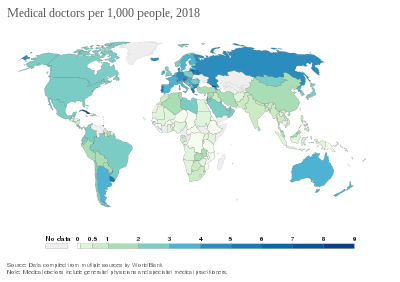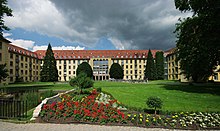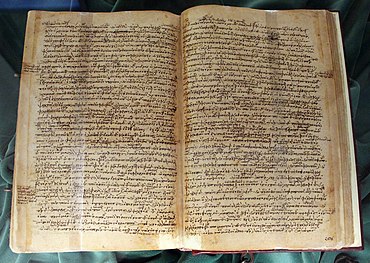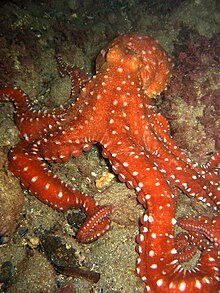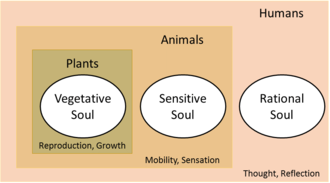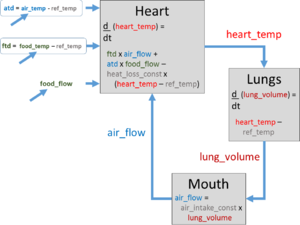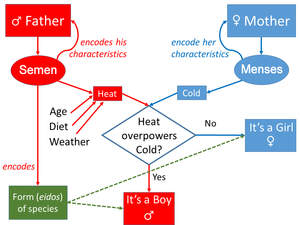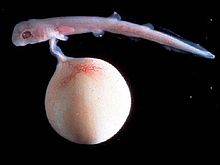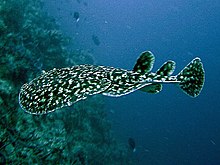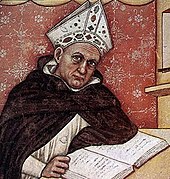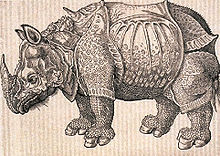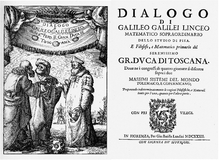Doctor of Medicine (abbreviated M.D., from the Latin Medicinae Doctor) is a medical degree, the meaning of which varies between different jurisdictions. In the United States, and some other countries, the M.D. denotes a professional graduate degree. This generally arose because many in 18th-century medical professions trained in Scotland, which used the M.D. degree nomenclature. In England, however, Bachelor of Medicine, Bachelor of Surgery was used and eventually in the 19th century became the standard in Scotland too. Thus, in the United Kingdom, Ireland and other countries, the M.D. is a research doctorate, higher doctorate, honorary doctorate or applied clinical degree restricted to those who already hold a professional degree (Bachelor's/Master's/Doctoral) in medicine; in those countries, the equivalent professional to the North American and some others use of M.D. is still typically titled Bachelor of Medicine, Bachelor of Surgery (M.B.B.S.).
History
The first medical degrees were awarded by the Schola Medica Salernitana around the year 1000, including to women such as Trota of Salerno. The degrees received legal sanction in 1137 by Roger II of Sicily and in 1231 by Emperor Federico II, in the Constitution of Melfi. In the titles XLIV-LXXXIX of the third book of the Constitutions of 1231, it was established that the activity of a physician (medicus) could only be carried out by physicians holding a medical degree, the Licentia Medendi (license to practice medicine), by the Schola Medica Salernitana (the only school in the kingdom authorized to award degrees in medicine). This degree was awarded after a curriculum composed of three years of study of logic, five years of medical studies, an examination of a commission composed of the professors of the university, a one-year apprenticeship with an expert doctor, and a final examination before the commissioners of the Royal Curia and the Provincial Curias.
In 1703, the University of Glasgow's first medical graduate, Samuel Benion, was issued with the academic degree of Doctor of Medicine.
University medical education in England culminated with the MB qualification, and in Scotland the M.D., until in the mid-19th century the public bodies who regulated medical practice at the time required practitioners in Scotland as well as England to hold the dual Bachelor of Medicine and Bachelor of Surgery degrees (MB BS/MBChB/MB BChir/BM BCh etc.). North American medical schools switched to the tradition of the ancient universities of Scotland and began granting the M.D. title rather than the MB beginning in the late 18th century. The Columbia University College of Physicians and Surgeons in New York (which at the time was referred to as King's College of Medicine) was the first American university to grant the M.D. degree instead of the MB.
Early medical schools in North America that granted the Doctor of Medicine degrees were Columbia, Penn, Harvard, Maryland, and McGill. These first few North American medical schools that were established were (for the most part) founded by physicians and surgeons who had been trained in England and Scotland.
A feminine form, "Doctress of Medicine" or Medicinae Doctrix, was also used by the New England Female Medical College in Boston in the 1860s. In most countries having a Doctor of Medicine degree does not mean that the individual will be allowed to practice medicine. Typically a physician must go through a residency for at least three years and take some form of licensing examination in their jurisdiction.
By country
Professional degrees
Afghanistan
In Afghanistan, medical education begins after high school. No pre-medicine courses or bachelor's degree is required. Eligibility is determined through the rank applicants obtain in the public university entrance exam held every year throughout the country. Entry to medical school is competitive, and only students with the highest ranks are accepted into medical programs. The primary medical degree is completed in 7 years. According to the new medical curriculum (from 2016), during the 12th semester, medical students must complete research on a medical topic and provide a thesis as part of their training. Medical graduates are awarded a certificate in general medicine, regarded "MD" and validated by the "Ministry of Higher Education of Afghanistan". All physicians are to obtain licensing and a medical council registration number from the "Ministry of Public Health" before they officially begin to practice. They may subsequently specialize in a specific medical field at medical schools offering the necessary qualifications. After graduation, students may complete residency.
The MD specification: Before the civil wars in Afghanistan, medical education used to be taught by foreign professors or Afghan professors who studied medical education abroad. The Kabul medical institute certified the students as "Master of Medicine". After the civil wars, medical education has extremely changed, and the MD certification has been reduced to "Medicine Bachelor".
Argentina
In Argentina, the First Degree of Physician or Physician Diplomate (Spanish: Título de Médico) is equivalent to the North American MD Degree with six years of intensive studies followed by usually three or four years of residency as a major specialty in a particular empiric field, consisting of internships, social services and sporadic research. Only by holding a Medical Title can the postgraduate student apply for the Doctor degree through a doctorate in medicine program approved by the National Commission for University Evaluation and Accreditation.
Australia
Historically, Australian medical schools have followed the British tradition by conferring the degrees of Bachelor of Medicine and Bachelor of Surgery (MBBS) to its graduates whilst reserving the title of Doctor of Medicine (MD) for their research training degree, analogous to the PhD, or for their higher or honorary doctorates. Although the majority of Australian MBBS degrees have been graduate programs since the 1990s, under the previous Australian Qualifications Framework (AQF) they remained categorized as Level 7 Bachelor's degrees together with other undergraduate programs.
The latest version of the AQF includes the new category of Level 9 Master's (Extended) degrees which permits the use of the term 'Doctor' in the styling of the degree title of relevant professional programs. As a result, various Australian medical schools have replaced their MBBS degrees with the MD to resolve the previous anomalous nomenclature. With the introduction of the Master's level MD, universities have also renamed their previous medical research doctorates. The University of Melbourne was the first to introduce the MD in 2011 as a basic medical degree, and has renamed its research degree to Doctor of Medical Science (DMedSc).
Austria
In Austria, medical studies (medicine or dentistry) take 6 years full-time. In medicine, the first two years comprise basic fields of medicine such as anatomy, biology, chemistry, physics, physiology, etc., the next three years consist of all medical fields in the narrower sense with frequent bedside training and medical traineeships while the sixth and last year is dedicated solely to working in a clinic. After this, a specific 6-year training (e.g. in internal medicine, paediatrics, ENT, pathology) or 4 year (GP) can be started; without this training, working with patients is forbidden. There is no central placement test for said specialist training, only a board-registered spot as a resident/registrar is needed. As with all other studies in Austria, there is no tuition but compulsory students' insurance (approx. 38 € per year). A specific entrance exam (MedAT, Medizin-Aufnahmetest, medicine acceptance test) has to be taken but is open only once a year in summer; a fee of 110 € has to be paid. In 2019, 16.443 persons registered for the MedAT and 12.960 took the test. 1.680 university places for both medicine and dentistry are offered each year with 95% of all places for EU citizens and 75% for applicants with an Austrian higher education entrance qualification/GCE A-levels. Many Germans who are denied studying in their home country try to study medicine in Austria; hence this quota was introduced and approved by the EU as most of them leave upon graduation.
The title of "Doktor" is granted to physicians (Dr. med. univ., Doctor medicinae universae, Dr. der gesamten Heilkunde = Dr. "of the entire art of healing") and dentists (Dr. med. dent., Doctor medicinae dentinae), who do not possess doctorate degrees, but Master's level 6 year-training, similar to the American MD or DDS. although they have to write a diploma thesis of approx. 50–100 pages. In former days the same title was connected to an official doctorate degree in connection with an older study regulation. The law has been changed in 2002. Some of which are published in peer-reviewed journals while others are not. A post-graduate research doctorate (Dr. scient. med., Dr. scientiae medicinae, or PhD) can be obtained after a three years post-graduate study at a medical university.
All doctors may be addressed as "Doktor ______", and the title is usually contracted to "Dr. ______". In many everyday-day settings in Austria, also outside the clinic, it is common to address medical doctors solely as "Herr/Frau Doktor" (Mr./Ms./Mrs. doctor) without any specific family name (especially in rural areas and small villages, and by older people), and they are often viewed as the "real doctors". Among themselves, MDs don't use "doctor" as an appellation but just "Herr Kollege/Frau Kollegin" (Mr./Ms/Mrs. = "dear" colleague). Consistent use of "Doktor" when addressing another medical doctor is seen as confrontative and mockery.
Belgium
In the French-speaking part of Belgium, the medical degree awarded after six years of study is "Docteur en Médecine". Physicians would then have to register with the Ordre des Médecins to practice medicine in the country.
In Flanders, the medical degree awarded after six years of study is "Master in de geneeskunde". Physicians would then either have to do a three year internship to become a general practitioner or specialize.
Bosnia and Herzegovina
In Bosnia and Herzegovina, the title of "doktor medicine" (abbreviated "dr. med.") is awarded upon completion of six years of study at a Faculty of Medicine ("medicinski fakultet") immediately after high school.
Bulgaria
At the end of the six-year medical programs from Bulgarian medical schools, medical students are awarded the academic degree Master/Magister in Medicine and the professional title Physician – Doctor of Medicine (MD / MA ).
Cambodia
After 6 years of general medical education (a foundation year plus 5 years), all students will graduate with a Bachelor of Medical Sciences (BMedSc, Khmer: បរិញ្ញាប័ត្រ វិទ្យាសាស្រ្តវេជ្ជសាស្ត្រ), equivalent to Bachelor of Science, Bachelor of Surgery (MBBS). This degree does not allow graduates to work independently as a physician, but it is possible for those who wish to continue to master's degrees in other fields relating to medical sciences such as public health, epidemiology, biomedical science, and nutrition.
Medical graduates, who wish to be fully qualified as physicians or specialists must follow the process as below:
- General Practitioner's (GP) course of 8 years (BMedSc plus a 2-year internship). Clinical rotation during the internship is modulated within four main disciplines (general medicine, surgery, gynecology, and pediatrics). The medical certification awarded is Diploma of Doctor of Medicine (MD, Khmer: បណ្ឌិតវេជ្ជសាស្ត្រ ឬ វេជ្ជបណ្ឌិត) – equivalent to a master's degree [?].
- After graduating with BMedSc; any students who wish to enter a 'Residency Training Program', are required to sit for an Residency Entrance Exam. The duration of the programs takes 4 years after either BMedSc or MD (BMedSc or MD plus 4 years of specialization). Once the graduates have successfully defended their practical thesis, they are awarded the Diploma of Specialized Doctor (MD with specialization, Khmer: សញ្ញាប័ត្រ៖ វេជ្ជបណ្ឌិតឯកទេស, lit. 'Professional Doctorate').
All medical graduates must complete a 'Thesis Defense' and pass the National Exit Exam (Khmer: ប្រឡងចេញថ្នាក់ជាតិក្នុងវិស័យសុខាភិបាល) to become either GPs or medical or surgical specialists. Last but importantly, those GPs or MDs have to register their name in the Cambodian Medical Committee (CMC) to receive the license to see patients, and pay for the registration every year.
Canada
In Canada, the M.D. is the degree required to practise medicine. Despite the name, the MD is considered to be equivalent to a bachelor's degree in Canada. Similar to the United States, students in Canada from English-speaking provinces must attain a bachelor's degree, then pass the MCAT at which point they move into the typical 4-year medical school curriculum. The notable exception is the French-speaking province of Quebec, where their special CEGEP post-secondary institutions don't grant a bachelor's degree, but instead College Education Diplomas (DECs). Students typically enroll in a 2-year Science Program such as Health Science, Pure & Applied, or Environmental (latter exclusive to CEGEP Dawson College) which lead into the one-year med-p at Quebec universities, where students catch up on what they need, at which point it resumes like any other province and students pass the 4-year curriculum. This in total means the path to graduation from medical school is one year shorter for Quebec students (7 as opposed to 8). McGill University Faculty of Medicine is the only medical school in Canada that continues to award the M.D., C.M. degrees (abbreviated M.D.C.M.). M.D.C.M. is from the Latin Medicinae Doctorem et Chirurgiae Magistrum meaning "Doctor of Medicine and Master of Surgery". Upon graduation, students enter into a residency phase of training. Prior to obtaining an independent practising licence from a provincial regulatory body, students must complete the Medical Council of Canada Qualifying Examination to obtain the Licentiate of the Medical Council of Canada (LMCC) qualification.
Chile
In Chile, medical education begins after graduating high-school, in public or private universities, which select candidates based on a national entrance exams (former University Selection Test, now in transition to a new selection test). Public universities and private universities cost around US$8,000–12,000 a year. In almost every university the career lasts for 7 years, the first two being basic sciences, then three years of preclinical studies, and ending with two years of supervised clinical practice (internship, or “internado”) both at hospitals and ambulatory centers. Upon graduation, students obtain the professional title "Médico Cirujano", equivalent to Doctor of Medicine (MD). After graduation every new physician must take the EUNACOM (National Exam of Medical Knowledge), which gives the ability to practise medicine in public establishments of primary or hospital care. The title enables the graduate to practice as a General Practitioner, and many of them may follow specialization studies in clinical or non-clinical fields. There is a national program of accreditation, mandatory to every Medicine School. In Chile, physicians receive the courtesy denomination of Doctor followed by their family name, even though in an academic environment the medical title isn't accepted as an equivalent to PhDs; regardless, at community and family level, and in day-to-day activities, they are often viewed as "real doctors".
China
In China, many prestigious research universities such as Peking Union Medical College, Peking University Health Science Center, and Shanghai Jiao Tong University offer the 8-year Doctor of Medicine program. In the meantime, the majority of primary medical training comes in the form of a 5-year Bachelor of Medicine degree, which includes 2.5 years of basic science and biomedical science training and 2.5 years of clerkship training. Graduates from such programs are eligible to sit for Medical Doctor License Examination in China providing they are working as resident physicians in a hospital. Many of the young doctors do seek further training by entering a 3-year Master of Medicine (clinical track) program or 5-year Doctor of Medicine (clinical track). Some take a job/promotion after the 3-year program and work for a number of years and then take on another 3 years of training to get the ultimate Doctor of Medicine degree.
Croatia
In Croatia, the title of "doktor medicine" (abbreviated "dr. med.") is awarded to candidates who successfully completed six years of study in medicine and defended their graduate thesis (student's original research in clinical / preclinical medicine or life sciences). The title is legally awarded only upon the successful thesis exam (thesis defence) in the presence of a board of senior researchers and candidate's research mentor. It is not equivalent to "doktor znanosti" degree ("doctor scientiae", abbreviated "dr.sc."), which is equivalent to PhD.
Cuba
In Cuba, the title of "Doctor en Medicina" (Doctor of Medicine) is awarded upon completion of six years of study at a University of Medical Sciences after high school. Medicine was one of the four foundational careers of the first Cuban university named Real y Pontificia Universidad de San Jeronimo de La Habana (current University of Havana) founded in 1728.
Czech Republic
In the Czech Republic, students are awarded the title MUDr. upon successfully passing set of State Examinations after six years of medical school composed of theoretical and clinical training.
Dominican Republic
In the Dominican Republic, it is known as "Doctor en Medicina" (Doctor in Medicine). In 1511 the Spanish Catholic church founded the first university of the Americas in Santo Domingo present capital of modern-day Dominican Republic and name it Universidad Santo Tomas de Aquino (today Universidad Autonoma de Santo Domingo). In 1630 this university graduated the first medical doctors of the Americas and amongst the graduates some Native Americans included.
Ecuador
In Ecuador, medical school begins after graduating high-school. There are two options; applying to public or private universities. Both private and public university select their candidates based on entrance exams. Public universities are free while private universities cost around US$6,000–12,000 a year. In most universities, the career lasts for 6 years. After graduating, students obtain a degree of “médico” or "médico cirujano", depending which one is offered by each university. Both degrees are equivalent to doctor of medicine (MD).
Estonia
In Estonia, there is only one university, The University of Tartu, with programs in medicine and dentistry. The program in medicine lasts for 6 years, including a one year clinical internship, and students are awarded Doctor of Medicine (MD) upon graduation. The degree is academically equivalent to a master's degree. After that, one can work either as a general practitioner or enter a residency program to become a specialized doctor. Residency usually lasts, depending on the field, three to five years, with surgical residencies usually being the longest (5 years).
France
After graduating from high school with a Baccalaureat, any student can register at a university of medicine (there are about 30 of them throughout the country). Until 2018, at the end of the first year, an internal ranking examination took place at each of these universities in order to implement the numerus clausus. This ranking examination and the numerus clausus has since been abolished. First year consists primarily of theoretical classes such as biophysics and biochemistry, anatomy, ethics or histology. Passing first year is generally considered very challenging, requiring hard and continuous work. Each student can only try twice. For example, the Université René Descartes welcomes about 2,000 students in the first year and only 300 after numerus clausus.
The second and third year are usually quite theoretical although the teachings are often accompanied by placements in the field (e.g., internships as nurses or in the emergency room, depending on the university).
During their fourth, fifth and sixth years, medical students get a special status called "externe" (In some universities, such as Pierre et Marie Curie, the externe status is given beginning in the third year). They work as interns every morning at the hospital plus a few night shifts a month and study in the afternoon. Each internship lasts between three and four months and takes place in a different department. Med students get five weeks off a year.
At the end of the sixth year, they need to pass a national ranking exam, which will determine their specialty. The first student gets to choose first, then the second, etcetera. Usually, students work hard during the fifth and sixth years in order to train properly for the national ranking exam. During these years, actual practice at the hospital and in conjunction with some theoretical courses are meant to balance the training. Such externs' average wage stands between 100 and 300 euros a month.
After taking those ranking exams, students can start as residents in the specialty they have been able to pick. That is the point from which they also start getting paid.
Towards the end of the medical program, French medical students are provided with more responsibilities and are required to defend a thesis; however, unlike a PhD thesis, no original research is actually necessary to write an MD thesis. At the conclusion of the thesis defense, French medical students receive a State Diploma of Doctor of Medicine (MD, French: diplôme d'Etat de docteur en médecine). Every new doctor must then proceed to a Diploma of Specialised Studies (DES, French: diplôme d'Etudes spécialisées) to mark their specialty. Some students may also receive a Diploma of Complementary Specialized Studies (DESC, French: diplôme d'Etudes spécialisées complémentaires).
Georgia
In Georgia, medical universities in Georgia offer a 6-year curriculum leading to award Doctor of Medicine (MD) "Physician" "Medical Doctor (MD), a European medical degree which is valid throughout the world. Some of the reputed medical universities include Batumi State University, Tbilisi State Medical University, Akaki Tsereteli State University and Petre Shotadze Tbilisi Medical Academy.
Germany
After at least six years of medical school, the students graduate with a final federal medical exam (Dritter Abschnitt der ärztlichen Prüfung). Graduates receive their license to practice medicine and the professional title of physician (Arzt). About 60% of them additionally obtain the academic degree Doctor of Medicine (Dr. med.). The European Research Council ruled in 2010 that a medical doctorate alone is not considered equivalent to a PhD research degree for the purpose of selection for ERC Starting Grants, requiring additional evidence (e.g., proof of an appointment that requires doctoral equivalency, such as a post-doctoral fellowship) for the overall training to be considered equivalent to a PhD.
Guyana
In Guyana, Doctor of Medicine (MD) degree is awarded after the completion of 4 years or 5 years of study. Texila American University, Green Heart University, American International School of Medicine, Alexander American University, Lincoln American University provides medicine programs.
Hungary
In Hungary, after six years of medical school, which includes a sixth-year internship, students are awarded the degree of 'okleveles orvosdoktor' (Doctor of Medicine) degrees.
Indonesia
In Indonesia, the title of "dokter" (dr.) is awarded after 3–3.5 years of study (at least) and 1.5–2 years of clinical course in university hospitals. After a medical student finished those five years of study, they need to take "Uji Kompetensi Mahasiswa Program Profesi Dokter" (UKMPPD). If they pass the test, they can take Hippocrates Oath and the title of Dokter (dr.) is entitled before their name. Then they need to take a year-long internship course in primary health care clinics (also known as Puskesmas) or primary hospitals all over the country to practice as general practitioner under supervision of senior doctors. Those who wished to further their study into specialties can take graduate course of medicine of their preference and will be entitled with "Specialist of ..." after their name (e.g.: Sp.A for Spesialis Anak = Pediatrician). A graduate course of medicine is equal with a residency program. It requires the candidates to study for four years followed by an internship in a hospital. Note that "dr." is used for medical graduates, while Dr. (or wrongfully DR.), that is Doktor, is used for PhD holders.
Iran
In Iran, Medical education begins after high school. No pre-med course or BSc degree is required. The eligibility is determined through the rank applicants obtain in the public university entrance exam being held every year throughout the country. The entry to medical school is competitive and only students with the highest rank are accepted into medical program. The primary medical degree is completed in 7–7.5 years. On the final years (last 1–2 years) medical students need to do a research on a medical topic and provide thesis as part of their trainings. Medical graduates are awarded a certificate in general medicine, called "Professional Doctorate in Medicine" validated by the "Ministry of Health and Medical Education of Iran". All physicians will obtain license and medical council registration number from the "Medical Council of Iran" before they officially begin to practice. They may subsequently specialize in a specific medical field at medical schools offering the necessary qualifications.
Israel
There are six university medical schools in Israel, including the Technion in Haifa, Ben Gurion University in Be'er Sheva, Tel Aviv University, the Hebrew University in Jerusalem, the medical school of the Bar-Ilan University in Safed, and Ariel University. They all follow the European 6-year model except Bar-Ilan University and Ariel University, which has a four-year program similar to the US system. However, as of 2009, Tel Aviv University has introduced a four-year program similar to the US system for students with a bachelor's degree in certain biological sciences. The entrance requirements of the various schools of medicine are very strict. Israeli students require a high school Baccalaureate average above 100 and psychometric examination grade over 740, which corresponds to the 99th percentile. Candidates achieving these demanding cognitive requirements are then selected according to their ranking in the Mor and Mirkam MMI personality tests. Approximately 30% of applicants pass the Mor and Mirkam tests and are accepted into medical school. The demand for medical education is strong and growing, and there is a lack of doctors in Israel. The Technion Medical School, Ben Gurion University, and Tel Aviv University Sackler Faculty of Medicine offer 4-year MD programs for American students who have American college degrees and have taken the MCAT interested in completing rigorous medical education in Israel before returning to the US or Canada. In Israel, the degree of Doctor of Medicine (MD) is considered to be equivalent to a master's degree academically and legally.
Italy
In Italy, before the Bologna process, the degree of "Dottore in Medicina e Chirurgia" (literally Doctor in Medicine and Surgery, from the Latin Medicinae Doctor et Chirurgiae) is awarded after completion of at least six years of study and clinical training in a university and after the submission of a thesis, that consists of original research.
However, spurred by the Bologna process, a major reform instituted in 1999 to align University programmes with the more universal system of undergraduate (bachelor's degree) and postgraduate studies (master's and doctoral degrees) and as such the degree of 'Dottore in Medicina e Chirurgia' is no longer offered and was replaced with the 'Laurea Magistrale in Medicina e Chirurgia' (Master of Medicine and Surgery). In this context, the new Laurea Magistrale a ciclo unico in Medicina e Chirurgia is a six-year second cycle degree, equivalent to a master's degree (360 ECTS credits) which can be earned in a six-year programme and requires a scientific research thesis. Consequently, the new medical degrees in Italy is considered to be equivalent to a Master's degree academically and legally.
Latvia
In Latvia, the duration of basic medical education is six years and leads to the Doctor of Medicine degree (ārsta diploms or M.D.). This degree is done full time and earns you 240 credits or 360 ECTS. The level acquired by this degree at the Latvian Qualifications Framework is similar to (EQF) level which is at is Level 7 and at the International Standard Classification of Education (ISCED) level is also Level 7. These levels indicate this qualification to be Masters level which is contrary to what North American M.D. is since it is considered a higher standing Bachelor or 1st Professional degree.
Lithuania
In Lithuania, the duration of basic medical education is six years and leads to the Doctor of Medicine degree (Aukštojo mokslo diplomas, nurodantis suteiktą gydytojo kvalifikaciją or M.D.). This degree is considered a Masters of Health Science degree.
Malaysia
In Malaysia, there are two types of MDs, one being for a basic medical degree while the other being a doctoral degree, depending on the awarding universities. The basic medical degree MDs (Similar to the MBBS awarded by other local universities) are awarded by both private and public universities, mostly are trained as a undergraduate 5-year course, however, with the establishment of Perdana University, it became the first university in Malaysia to provide a 4-year graduate entry course. Examples of universities in Malaysia offering the M.D degree are University Sains Malaysia, National University of Malaysia, University Putra Malaysia, UCSI University, etc. MDs are being awarded as a doctoral degree in public universities such as University of Malaya.
Philippines
In the Philippines, the MD is a first professional degree in medicine. To be accepted in Philippine medical schools, one must have finished a college degree before one can proceed to have a medical education. It is attained by either completing a 4-year degree or a 5-year degree (with internship included) from an accredited institution private and public Medical School by the Association of Philippine Medical Colleges and the Commission on Higher Education. The MD degree does not permit the practice of medicine but qualifies the degree-holder to apply for registration to the Professional Regulatory Commission. Registration to the commission through completion of internship and examinations will grant the privilege of practicing medicine in the Philippines. Moreover, the licensed Physician has the option to proceed for medical specialization and the taking of diplomate board examinations conducted by the respective board of medical specialists in a particular field.
Poland
In Poland the title of lekarz (physician, medical doctor) or "lek." is granted after completing a 6-year medical program (students apply to it directly after graduating high school). Many medical schools in Poland also offer medicine programs in English, which award the Doctor of Medicine (MD) degree. In contrast, a higher doctoral academic research degree in medicine resembling a PhD is named "dr n. med." or doktor nauk medycznych (Doctor of Medical Sciences). Specialization is valued similarly to a specialization in the English system. It is not a pre-requisite for a "dr n. med." which is an academic, not a professional title in Poland.
Romania
Romanian medical programs last for 6 years (including clinical practice), which is the long-cycle first professional degree and concludes with a final licensing examination (licența), based on the dissertation of the student's original research. The degree awarded is 'Doctor-Medic' and graduates are entitled to use the title "Dr."
Russia
Medical universities in Russia offer a six-year curriculum leading to award a professional graduate degree, called qualification (degree) of "specialist" (Diploma of Specialist; in medicine, Diploma of Physician (Doctor of Medicine)).
Whereas, the title of Doctor of Medical Sciences (Russian: доктор медицинских наук, "doktor medicinskikh nauk" abbreviated д. м. н.) is a higher research doctoral degree, which may be earned after the Candidate of Medical Sciences (the latter is informally regarded in Russia as equivalent to the Ph.D.).
Serbia
In Serbia, MD degree is awarded upon completion of six years of study at a School of Medicine immediately after high school, after which a six month residency followed a national exam has to be completed in order to complete the degree.
Singapore
The American Duke University has a medical school based in Singapore (Duke-NUS Medical School), and follows the North-American model of styling its first professional degree "Doctor of Medicine" ("MD"), consid. By contrast, the Yong Loo Lin School of Medicine at the National University of Singapore confers MB BS as the first professional degree.
Slovakia
Slovakia's medical education is offered at 4 medical schools in the country. Two of them are faculties of the Comenius UniversityJessenius School of Medicine in Martin,and there is a second medical school in Bratislava Slovak Medical University in Bratislava (SZU) while the fourth one is the Pavol Josef Šafarik University in Košice. Both the Jessenius School of Medicine and the Faculty of Medicine in Košice have several international students. The Jessenius School of Medicine has almost a thousand international students, most from Norway.
Admission to the medical schools is based on entrance examination that can be undergone once a year. The program is a 6-year program in general medicine with a strictly preclinical and clinical division. The preclinical years are the two first, and are purely theoretical. They consist of subjects such as cell biology, genetics, biophysics, medical chemistry, anatomy, biochemistry, histology, embryology and so on. From the third year onwards, the study is integrated with practical learning at the faculty's associated teaching hospital, including major multi-year subjects such internal medicine, surgery, pediatrics, etc. In the sixth and final year, the student must pass four final state examinations and defend a self-composed thesis in order to graduate with a professional doctorate granting them the title of MUDr. for practicing in Slovakia or the Czech Republic or MD when practicing outside of Slovakia.
Slovenia
In Slovenia, the title of "doktor medicine" (abbreviated "dr. med.") is awarded upon completion of six years of study at one of the two Slovenian Faculties of Medicine ("medicinska fakulteta") in Ljubljana or Maribor. Studying at these faculties is only possible if the student has finished a gymnasium/grammar school ("gimnazija") with a general diploma called "splošna matura".
South Korea
In South Korea, there is a Medical Doctor (MD) license.
The medical educations in South Korea (Republic of Korea) are 6 or 4 years in duration, 6-year courses starting right after high schools, and 4-year course starting after 4-year's university education (to start the 4-year course, the student needs a bachelor's degree). The first 2 years in the 6-year system is composed of basic sciences and liberal art courses.
Taiwan
In Taiwan, the MD is a first awarded professional degree that goes up and beyond the limits of upper education.
Tanzania
In Tanzania, MD is the first awarded degree and takes 5 years of medical school, plus a sixth-year internship, students are awarded the degree of Doctor of Medicine (MD). The popular medical school in country includes Muhimbili University of health and allied sciences (MUHAS), The University of Dodoma- School of Medicine and Dentistry (UDOM) and Catholic University of health and allied sciences (CUHAS)
After undergraduate studies the students then pursue residency or termed as Master of Medicine for 3 or 4 or 5 depending on the speciality they are interested after that the students is awarded Master of Medicine degree which they can further go on to do Superspecialities for 2 more years and after that do fellowship
Thailand
The Thai medical education follows the 6-year European system, consisting of 1 year in basic-science, 2 years in pre-clinical training, and 3 years for clinical training. Upon graduation, all medical students must pass national medical licensing examinations and a university-based comprehensive test. After medical school, newly graduated doctors are under contract to spend a year of internship and 2 years of tenure in rural areas before they are eligible for any other residency positions or specialized training. The students will receive Doctor of Medicine (MD) degree. However, the degree is equivalent to master's degree in Thailand. Specialty training after the MD degree requires at least 4–6 years residency program in the training university hospitals and must pass the board examination. Board-certified specialized degree is equivalent to doctorate degree.
Tunisia
In Tunisia, education is free for all Tunisian citizens and for foreigners who have scholarships. The oldest Medical school is a faculty of the University of Tunis. There are four medicine faculties situated in the major cities of Tunis, Sfax, Sousse and Monastir. Admission is bound to the success and score in the baccalaureate examination. Admission score threshold is very high, based on competition among all applicants throughout the nation. Medical school curriculum consists of six years. The first two years are medical theory (PCEM), containing all basic sciences related to medicine, and the last four years (DCEM) consists of clinical issues related to all medical specialties. During these last four years, the student gets the status of "Externe". The student has to attend at the university hospital every day, rotating around all wards. Every period is followed by a clinical exam regarding the student's knowledge in that particular specialty. After those five years, there are two years on internship, in which the student is a physician but under the supervision of the chief doctor; the student rotates over the major and most essential specialties during period of four months each. After that, student has the choice of either passing the residency national exam or extending his internship for another year, after which he gains the status of family physician. The residency program consists of four to five years in the specialty he qualifies, depending on his score in the national residency examination under the rule of highest score chooses first. Whether the student chooses to be a family doctor or a specialist, he has to write a doctoral thesis, which he will be defending in front of a jury, after which he gains his degree of Docteur d'état en Medecine (MD).
Turkey
In Turkey, the title of "Tıp Doktoru" (literally "Doctor of Medicine") is awarded upon completion of six years continuous study started with five years university education include three years basic sciences, two years clinical courses followed by one year of internship in university hospitals. The internal structure and methodology of training vary among universities; however vertical integration between basic and clinical sciences and horizontal integration between disciplines have become more prevalent approaches as well as student oriented practices. Regardless of the university, the whole program is equivalent to a combined degree of bachelors and masters, thus every students graduates with a master's degree. The graduates, becoming Doctors of Medicine, are eligible to practice general medicine through state assigned slots, start residency training through a state exam called "TUS"(short for "Tıpta Uzmanlık Sınavı"), or apply for a PhD program in a relevant field.
Ukraine
In Ukraine, by 2018, graduates of the school with completed secondary education that have coped with the relevant exams (in the disciplines designated by these universities) in the nationwide system for assessing graduates' knowledge – EIT (Ukrainian: ЗНО, External independent testing) based on the rating – may be admitted to the Medical Universities.
Ukrainian medical universities offer a 6-year curriculum, which should end with the passing of the State Complex Examination. The graduate receives the Diploma of the State Standard with the title "Specialist Diploma", which specifies a specialty and qualification (for example, "Physician"), or "Magister's Diploma" also of a state standard. After that, the graduate according to the rating division (at the university) is required to undergo a practical internship course (working as a doctor under the supervision of an experienced doctor) with a duration of 2 to 3 years, in the corresponding specialty. Successful completion of internship implies that an intern passes an examination on a specialty, including testing and receives a certificate of a specialist physician of the Ministry of Health, which is a formal permission for practical activity.
Thus, the American MD and the Ukrainian Physician have identical titles. On the other hand, the colloquial (not official terminology) Doctor of Medicine means that a Physician with a higher education successfully defended his thesis, after a 2-year postgraduate course and corresponding term of research (Candidate of Medical Sciences before 2015, or Ph.D. after 2015 – till 2020), which is closer to the English system of degrees.
United States
In the United States, the M.D. awarded by medical schools is a professional doctorate (as opposed to the Doctor of Philosophy degree which requires a focus on research) and is accredited by the Liaison Committee on Medical Education (LCME), an independent body sponsored by the Association of American Medical Colleges, and the American Medical Association (AMA).
In addition to the M.D., the Doctor of Osteopathic Medicine (D.O.) is an equivalent professional doctoral degree for physicians and surgeons offered by medical schools in the United States. According to Harrison's Principles of Internal Medicine, "the training, practice, credentialing, licensure, and reimbursement of osteopathic physicians is virtually indistinguishable from those of M.D. physicians, with 4 years of osteopathic medical school followed by specialty and subspecialty training and certification."
Admission to medical school in the United States is highly competitive, and in the United States there were 21,869 matriculants to medical school out of 53,371 applicants (≈41%) in 2019. Before entering medical school, students are required to complete a four-year undergraduate degree and take the Medical College Admission Test (MCAT); however, some combined undergraduate-medical programs exist. Before graduating from a medical school and being awarded the Doctor of Medicine degree, students are required to take the United States Medical Licensing Examination (USMLE) Step 1 and the clinical knowledge Step 2 exam. As of 2020, the requirement of the Clinical Skills portion of the Step 2 exam was removed. The MD degree is typically earned in four years. Following the awarding of the MD, physicians who wish to practice in the United States are required to complete at least one internship year (PGY-1) and pass the USMLE Step 3. In order to receive board eligible or board accredited status in a specialty of medicine such as general surgery or internal medicine, physicians undergo additional specialized training in the form of a residency. Those who wish to further specialize in areas such as cardiology or infectious diseases then complete a fellowship. Depending upon the physician's chosen field, residencies and fellowships involve an additional three to eight years of training after obtaining the MD. This can be lengthened with additional research years, which can last one, two, or more years.
Even though the M.D. is a professional degree and not a research doctorate (i.e., a Ph.D.), many holders of the M.D. degree conduct clinical and basic scientific research and publish in peer-reviewed journals during training and after graduation; an academic physician whose work emphasizes basic research is called a physician-scientist. Combined medical and research training is offered through programs granting an MD-PhD. The National Institutes of Health (NIH), through its Medical Scientist Training Program, funds M.D.-Ph.D. training programs at many universities. Some M.D.s choose a research career and receive funding from the NIH as well as other sources such as the Howard Hughes Medical Institute. The United States Department of Education and the National Science Foundation do not include the M.D. or other professional doctorates among the degrees that are equivalent to research doctorates.
Venezuela
After graduating from high school in Venezuela students can apply for federal appointment to a six-year medical program within a university. Only Public Universities offer this degree in Venezuela. Any student can apply for federal appointment by Ministry of Higher Education. So that, the student is allowed to register at university and follow a medical program. This a six-year program divided within three cycles. First cycle: Theory and lectures (1–2), second cycle: pre-clinical training (3–4) and third cycle: clinical training (5–6).
First year consists mainly of theoretical classes. however there are practical experiences since first day in laboratories and institutes, such as biochemistry, anatomy which includes lectures and teaching sessions with cadavers in dissection tables, molecular biology, histology, embryology and many others general subjects.
The second year is mainly theoretical, although most teaching sessions take place in laboratories. After completing these years the student know how the human body is and how it works. Also, any extrinsic agent that can modify its functions. There is also Medical Exercise demonstration which included guided visit to primarily care centers during a complete semester or year-round depending on universities.
During third year medical students start studying pharmacology, pathology and physical examination. Passing successfully first, second and third year is commonly considered a filter, almost half of previously admitted students leave voluntarily.
The fourth year medical students enter on the field starting to visit hospitals and healthcare services. This is called Pre-Clinical Cycle were they acquire deep knowledge about clinical examination visiting specialized units such as Internal Medicine, Trauma and orthopedics, surgery and gynecology and obstetrics. They start to be member of a medical team. Every morning at the hospital, plus one night shifts per week, and lectures in the afternoon. Each internship lasts between six and four months and takes place in a different department.
The fifth and sixth year are very similar but this time they applied their previously earned clinical knowledge and skills starting to follow patients independently. At the end of the sixth year, they need to pass a highly supervised medical practice examination in an unserved outpatient center or specialized hospital in order to earn the degree. During these years, there is training at the hospital almost exclusively. Very little theoretical courses are meant to balance the training. Once completed they earn a university degree and a title granted by the Bolivarian Republic of Venezuela as "Medical Surgeon" this is considered equivalent to a M.D degree.
There is also a five years program the "Médico Integral Comunitario" title and degree granted by newly created universities and headed by Cuban nationals from the Cuba – Venezuela cooperation agreements. This program has been subject of controversy in the country over the legitimacy of the Cuban doctors' licensure for teaching and practice medicine.
After graduation, recently graduate doctors acquire the right to use Dr. before their names but still must follow a one-year exercise in the countryside or a two years training in a specialized hospital. So that, They can be enabled to practice medicine with a full licence in Venezuela and the right to work as a medical doctor, generally as a general practitioner (Artículo 8). That is the point from which they also start getting paid.
They can follow specialized studies which usually last between 3 or 5 years depending on specialization and furthermore a Doctorate degree for relevant research and a Thesis, which usually take three or more years.
Postgraduate clinical degrees
Bhutan
In Bhutan, a medical doctor who completes 4 to 5 years of medical school is awarded with MBBS or Dr.title by their respective universities ( usually from universities in Sri Lanka, India, Thailand and Bangladesh). Upon recognition by Bhutan Health and Medical council, they work as medical doctor in country. M.D title is usually given to those who completes 3 to 4 years of residency for specialised course like surgery, medicine pediatrics, etc.
India
The MBBS (Bachelor of Medicine/Bachelor of Surgery) degree represents the first (undergraduate) level of training required to be licensed as a physician (other degrees in alternative medicine are present like BAMS, BHMS, BSMS etc.) and the MS or MD degree is a postgraduate degree, representative of speciality training. The equivalent training in the US or Canada would be the completion of a medical (post-graduate) degree. Eligibility for the MS or MD course is restricted to medical graduates holding the MBBS degree.
The MBBS course is for five and a half years, and training imparted is as follows:
- Pre-clinical (Anatomy, Physiology, and Biochemistry)
- Para-clinical (Pathology, Microbiology, Pharmacology, Forensic Medicine and Community Medicine)
- Clinical (Ophthalmology, Otorhinolaryngology, General Medicine, General Surgery, Pediatrics and Obstetrics/Gynecology; with speciality rotations such as Orthopaedics, Radiology, Pulmonary Medicine, Psychiatry, Dermatology, Anesthesiology and Dentistry)
After five and a half years of study and the successful completion of an examination, which includes both theoretical and practical elements, in a pre-clinical or clinical subject of a non-surgical nature such as Physiology, Pharmacology, Internal Medicine, Pediatrics, Pathology, Psychiatry, Microbiology] the candidate receives a Doctor of Medicine (MD) degree, whereas in a pre-clinical or clinical subject of a surgical nature (e.g. Anatomy, General Surgery, Orthopaedics, Obstetrics/Gynaecology, Ophthalmology), the candidate receives the equivalent degree Master of Surgery (MS). The Doctor of Medicine awarded by Medical Universities in India and regulated by Medical Council of India are doctorate level qualification incorporating high level specialist clinical training, research and teaching. Doctor of Philosophy (PhD) in medical subjects is a research doctorate level qualification and could be done under supervision of a guide who is MD qualified from India (rather than PhD) and usually doesnot involve direct clinical work or teaching of scholars of that specialty. Scope for PhD in medical subjects is very limited in India as all faculty appointments mostly (except for some pre-clinical subjects) require a person to hold MD/MS in their respective specialties rather than a PhD.
A second alternate qualification termed DNB (Diplomate of National Board), is considered equivalent to the MD and MS degrees. However, the DNB is not awarded by Medical Universities and thus is not a doctorate level qualification. It can be obtained by passing the exam conducted by the National Board of Examinations after completing 3 years of post-MBBS residency training in teaching hospitals recognised by the board but not necessarily by the Medical Council. The College of Physicians & Surgeons of Mumbai (established in 1912) also awards higher postgraduate qualifications in clinical and pre-clinical specialities, called FCPS (Fellowship of CPS); it involves three years of study and the successful completion of an examination, which includes both theoretical and practical elements, and a research thesis and a viva. The FCPS is representative of speciality clinical training, and equivalent to MD/MS/DNB/PhD Medical in Medical Doctorate in other parts of the world. Until 2007, the Government of India and the Medical Council of India recognised the FCPS qualification – since then, this is being done by State Medical Councils.
After obtaining the first postgraduate degree, that is MD/MS/FCPS/DNB/PhD Medical, one can go for further specialisation in medical or surgical fields. This involves a highly competitive entrance examination. This course has three years of additional training and requires the submission of a dissertation (thesis). This is also considered a clinical doctorate as the focus is on preparing a super-specialist with adequate clinical as well as research training. After the dissertation is approved and the exit examination (theory and practical) is cleared, the degree awarded is DM (Doctor of Medicine), PhD Medical . Based on the specific field of training, the degree awarded is DM in Cardiac Anaesthesia, Cardiology, Neurology, Nephrology, Gastroenterology, Neuroradiology, Critical Care, Pulmonology, Hematology, Medical Oncology, Clinical Pharmacology, Pediatric Critical Care, Pediatric Neurology, Neonataology, Pediatric Gastroenterology, Neuroanaesthesia, etc. For surgical superspecialities the degree awarded is MCh (Magister Chirurgiae), like MCh in Cardio-thoracic and Vascular Surgery, Endocrine Surgery, Neurosurgery, Surgical Gastroenterology, Urology, Plastic Surgery, Pediatric Surgery etc. DM and MCh are the clinical equivalent of a doctorate degree just like MD degree. The holders of DM who also hold a MD degree thus have two doctorate degrees one in broad specialty and the other in its subspecialty. A third alternate qualification is DNB (superspecialties), offered by National Board of Examinations, like DNB in Cardiology, Neurology, Cardiac Surgery, Neurosurgery.
Following DM or MCh, one can also go for postdoctoral fellowship programs of one-year duration in specific subspecialties like Cardiac Electrophysiology, Invasive cardiology, Pediatric cardiology, Epilepsy, stroke, electroencephalography, movement disorders, neuromuscular disorders, cerebrovascular surgery, skull base surgery, neurocritical care, pediatric cardiac surgery etc. offered by prestigious government institutes and abroad.
The National Board of Examinations also awards the DNB degree for 6 year integrated surgical courses in specialties of Neurosurgery, Cardio-thoracic and Vascular Surgery, Pediatric Surgery and Plastic surgery. The residency period lasts 6 years post MBBS and thus alleviates the need to undergo a 3-year residency in General Surgery.
Pakistan
In Pakistan MBBS is the undergraduate degree. The MD is a higher doctorate, awarded by medical universities based on successful completion of a residency program of four to six years' duration in a university hospital. Many universities are offering MD. Parallel to MD, MS is a higher doctorate awarded on successful completion of four to six years' duration of a residency program in surgical field.
Sri Lanka
In Sri Lanka, the MD degree is a higher postgraduate degree that is awarded by the Postgraduate Institute of Medicine after completion of a postgraduate course, examinations and speciality training. The MD degree in Sri Lanka is representative of specialty training in clinical, para clinical, and preventive medicine (e.g., general medicine, cardiology, nephrology, oncology, para clinical such as microbiology, haematology and preventive such as community medicine). Entry for the MD course is open only for medical graduates holding the MBBS degree (with a duration of five and a half years), and training is obtained in medical disciplines that are non-surgical in nature (e.g., internal medicine, radiology, pathology, etc.) After three or four years of study and the successful completion of an examination with written as well as cases and via examinations, the MD degree in the respective field of study is awarded. In community medicine and medical administration, part I examination consists of a theoretical exam while the degree is conferred after completion of a thesis as a PhD. This thesis has to be completed within a period of five years. After successfully defending the academic thesis, the MD degree is conferred to the candidate. The MD degree holder is certified as a board certified specialist by the respective board of study of the Postgraduate Institute of Medicine after he or she undergoes 2–4 years of local and foreign training depending on the specialty/subspecialty selected.
Research degrees
United Kingdom, Ireland and some Commonwealth countries
The entry-level first professional degree in these countries for the practice of medicine is that of Bachelor of Medicine and Bachelor of Surgery (MBBS, MB, MB BCh BAO, BMBS, MBBChir, or MBChB). This degree typically requires between four and six years of study and clinical training, and is equivalent to the North American MD degree. Due to the UK code for higher education, first degrees in medicine comprise an integrated programme of study and professional practice spanning several levels. These degrees may retain, for historical reasons, "Bachelor of Medicine, Bachelor of Surgery" and are abbreviated to MBChB, MBBS or BMBS.
In the UK, Ireland and many Commonwealth countries, the MD is a postgraduate research degree in medicine. At most universities, this takes the form of a first doctorate, analogous to the Ph.D., awarded upon submission of a thesis and a successful viva. The thesis may consist of new research undertaken on a full- or part-time basis, with much less supervision (in the UK) than for a Ph.D., or a portfolio of previously published work.
In order to be eligible to apply for an MD degree from a UK or Commonwealth University one must hold either a "Bachelor of Medicine, Bachelor of Surgery" (MBBS, MBChB, BMBS for example) degree, or an equivalent U.S.-MD degree and must usually have at least five years of postgraduate experience. Therefore, graduates from the MBBS/MBChB/BMBS degrees do not hold doctorates; however, physicians holding these degrees are referred to as "doctor" as they are fully licensed as medical practitioners. In some commonwealth nations, these interns are designated as "house officers".
Traditionally, the MD in the UK and Commonwealth was a higher doctorate (similar to a DSc) awarded upon submission of a portfolio of published work representing a substantial contribution to medical research. Many universities have now changed its status, but this has happened only recently: for example, the University of Cambridge in 2012 introduced a new higher degree of MedScD (more akin to the ScD degree) awarded on the basis of a career's contribution to the science or art of medicine, while redesignating the MD as an initial research doctorate awarded on the basis of a thesis. Oxford, which had changed the regulations for the MD degree to bring it more in line with initial doctorates in 2002, removed its status as a higher doctorate after a review in 2016. Some Commonwealth institutions retain the MD as a higher degree, such as the relatively new James Cook University.
In the case where the MD is awarded (either as a first or higher doctorate) for previously published research, the candidate is usually required to be either a graduate or a full-time member of staff, of several years' standing of the university in question.
Equivalent degrees in other countries
- In Belgian medical education, in the first three years, which are theoretical in nature and lead to a university bachelor's degree, general scientific courses are taken such as chemistry, biophysics, physiology, biostatistics, anatomy, virology, etc. To enter the bachelor course in Flanders, prospective students have to pass an exam, as a result of the numerus clausus. After the bachelor courses, students are allowed to enter the 'master in medicine' courses, which consist of three years of theoretical and clinical study. In general, the first two master years are theoretical and teach the students human pathology, diseases and pharmacology. The third year consists of internships in a wide range of specialities in different clinics. The seventh, final year serves as a kind of 'pre-specialization' year in which the students are specifically trained in the specialty they wish to pursue after medical school.
- In Bangladesh, the basic medical degree is the MBBS. After completing the intermediate level of education (12 years) the candidate must undergo 5 years of medical training in any medical college to achieve the MBBS degree. After obtaining the degree, the candidate needs to undergo one year of internship to obtain BMDC (Bangladesh medical and dental council) accreditation in order to practice in the country.
- In mainland China, some medical schools award MBBS to foreign students while all medical schools award Bachelor of Medicine to nationals. Some MD degrees are higher academic research degrees.
- In Colombia, the medicine faculties of the universities awards the title of "Medico Cirujano" after taking 12 semesters of studies on "all clinic and surgery discipline a two semester on internship. After receiving the degree there is a mandatory year "obliged social work" were the doctors practice as GP in the countryside. Residency programs last between 3–4 years depends on the specialty.
- The Czech and Slovak title MUDr. (Medicinae Universae doctor or doktor medicíny) is a professional doctorate granted upon completion of six years pregraduate Master's study at medical schools. The postgraduate academic research degree in medicine is a PhD degree.
- The Danish and Norwegian Candidatus medicinae or Candidata medicinae degrees (cand. med.) is awarded after completing a six-year medical programme, to which students apply directly upon finishing secondary school. The programme usually includes a small thesis. However, the cand. med. degree must not be confused with the previous Danish and Norwegian Dr. Med. degree, which is a separate degree from the Ph.D. and represents a higher degree of medical research experience. It typically consists of at least 5–6 original publications.
- In Finland, the duration of basic medical education is six years and the course leads to the degree of Licentiate of Medicine.
- In Greece, after a six-year study, a medical student acquires his medical degree and the right to use "Δρ.", (Dr.) before his name. This is considered equivalent to the MD title.
- In Kosovo, there are medical high schools. Students from elementary school can choose to attend the medical high school, which lasts 3 years. When they finish the 3 years of medical high school, they practice for 4 months. After that, they can be a nurse or they can go to medical facilities in Pristina, with the education there taking around 6 years, including practice, to become a doctor.
- In Mexico and Peru, schools of medicine award the "Título de Médico Cirujano" degree after completing either six or seven years of study. This curriculum includes a rotating internship year and a year of social service providing care to an underserved community.
- In Nepal, a MBBS degree is awarded. This is an undergraduate level degree, which is awarded after completion of four and half years of medical school followed by one year of clinical internship. Most medical schools also offer postgraduate M.D and M.S. degrees, which requires three years of further training. Post-doctorate D.M. and M.Ch. terminal degrees are awarded by a few elite institutions after three more years of super-speciality training.
- In the Netherlands, medical students receive six years of university education prior to their graduation. Prospective students can apply for medical education directly after finishing the highest level of secondary school, vwo; previous undergraduate education is not a precondition for admittance. Medical students receive three years of preclinical training, followed by three years of clinical training (co-assistentschappen, or co-schappen) in hospitals. At one medical faculty (Utrecht University), clinical training already begins in the third year of medical school. After 6 years, students graduate as basisartsen (non-specialized physicians). As a result of the Bologna process, medical students in the Netherlands receive a bachelor's degree (BSc) after successfully concluding three years of medical university curriculum, and a master's degree (MSc) upon graduation. After graduation, physicians may choose to apply for and complete a research doctorate, earning them a PhD in Medicine. In international communication, Dutch medical graduates may identify themselves as MD. Whilst this title is neither officially awarded nor regulated in the Netherlands, its use is legally permitted.
- In Portugal, to practice medicine, a master's degree in medicine (awarded after a 6-year Integrated master's program in medicine) is mandatory. Before the 2007 Bologna Process, the same course was only a Licentiate Degree. After the 6-year program, students must go through the National Seriation Exam (Prova Nacional de Seriação), and then a year of General Medical Internship (Ano Comum). When the internship ends, the students are placed in their choice of Medical Specialty, according to their ranking in the aforementioned Exam and the vacancies available for each medical specialty. Only when each student finishes the Medical Internship, will they be allowed to practice medicine without supervision. Entry to the Integrated Masters Program in Medicine is done directly after high school, based on the student's grade – each year there are about 1800 new Medical Students in Portugal, in 8 different Medical Schools.
- In Sudan the awarded degree in most of the medical schools is, Bachelor of Medicine and Basic Surgery (MBBS). In schools that are based on the English system of medical teaching, the degree is granted after six years of studying. As for the schools that are adopting the American system, they grant their students the degree of MBBS in only five years.
- In Sweden, medical education begins with a five-and-a-half-year undergraduate university program including the successful completion of examinations, which includes both theoretical and practical elements. Depending upon university, a research thesis must also be completed during this time. This leads to the degree "Master of Science in Medicine" (Swedish: Läkarexamen). Following this, the National Board of Health and Welfare requires a minimum of 18 months of clinical internship (Swedish: AT (Allmäntjänstgöring)) before granting a medical license (Swedish: Läkarlegitimation) to be fully qualified as the Swedish equivalent to Medical Doctor (MD). This internship consists of surgery (3–6 months), internal medicine (3–6 months), psychiatry (three months) and family medicine (six months). Upon receiving a license to practice, a physician is able to apply for a post to start specialist training. There are currently 52 recognised medical specialties in Sweden. The specialist training (Swedish: ST (Specialiseringstjänstgöring)) has a duration of minimum five years, which upon completion grants formal qualification as a specialist.
Other postgraduate clinical degrees
There is also a similar advanced professional degree to the postgraduate MD: the Master of Surgery (usually ChM or MS, but MCh in Scotland, Ireland, Wales and at Oxford and MChir at Cambridge). The equivalence of these degrees, but their differing names, prevents the need for surgeons (addressed as Mr. in the UK) having to revert to the title Dr., which they once held as new MBBS graduates.
In Ireland, where the basic medical qualification includes a degree in obstetrics, there is a similar higher degree of Master of the Art of Obstetrics (MAO). A Master of Midwifery was formerly examined by the Worshipful Society of Apothecaries of London (hence MMSA) but fell into abeyance in the 1960s; in this case, the term Master referred not to a university degree but rather a professional rank that is common among craft guilds.
In East Africa, the medical schools in Kenya, Tanzania and Uganda award the degree of Master of Medicine (MMed) degree in both surgical and medical specialty disciplines following a three to six-year period of instruction. In Ethiopia students first finish high school then take a university entrance exam then based on their result (it is highly competitive) then start medical school. Recently, there is a further requirement to take another 1 year in university studying a common course and then take another exam to join medicine. After that the students begins studying preclinical medicine for 3 years studying anatomy, physiology, biochemistry, histology, embryology, pathology, pharmacology, microbiology and other minor courses of public health then at 4th year students join the clinical rotation ranging from physical examination and history taking to different specialities like internal medicine, surgery, paediatrics, and obstetrics & gynaecology for two years, and other minor specialities like psychiatry, ophthalmology, dermatology, ENT. After finishing these courses students take a qualification exam and become intern doctors for one year, before graduating as a general practitioner and serving two or more years in primary hospitals. They can then take a national residency exam, and pending good results, join their speciality.
In West Africa, the West African College of Physicians and the West African College of Surgeons award the Fellowship of the West African College of Physicians (FWACP) and the Fellowship of the West African College of Surgeons (FWACS) in medical and surgical disciplines respectively after a minimum of four-year residency training period.
The Doctor of Osteopathic Medicine or DO degree allows the same practice rights in the United States and Canada to the MD degree and Doctors of Osteopathic Medicine are fully licensed physicians. Holders of the MD degree must pass MD level board exams while DO holders can pass either the DO (COMLEX) exam or MD exam (USMLE). Similarly, MDs must attend MD rated residency and fellowship programs while DOs can attend either MD programs or Osteopathic (DO) programs. As a result of this, the Accreditation Council for Graduate Medical Education (ACGME) are currently transitioning to a single accreditation system for medical residencies in the U.S. The American MD degree is also recognized by most countries in the world, while DO physicians are only licensed to practice the full scope of medicine and surgery in approximately 50 countries, as of 2012, with partial rights in a number of other nations.
